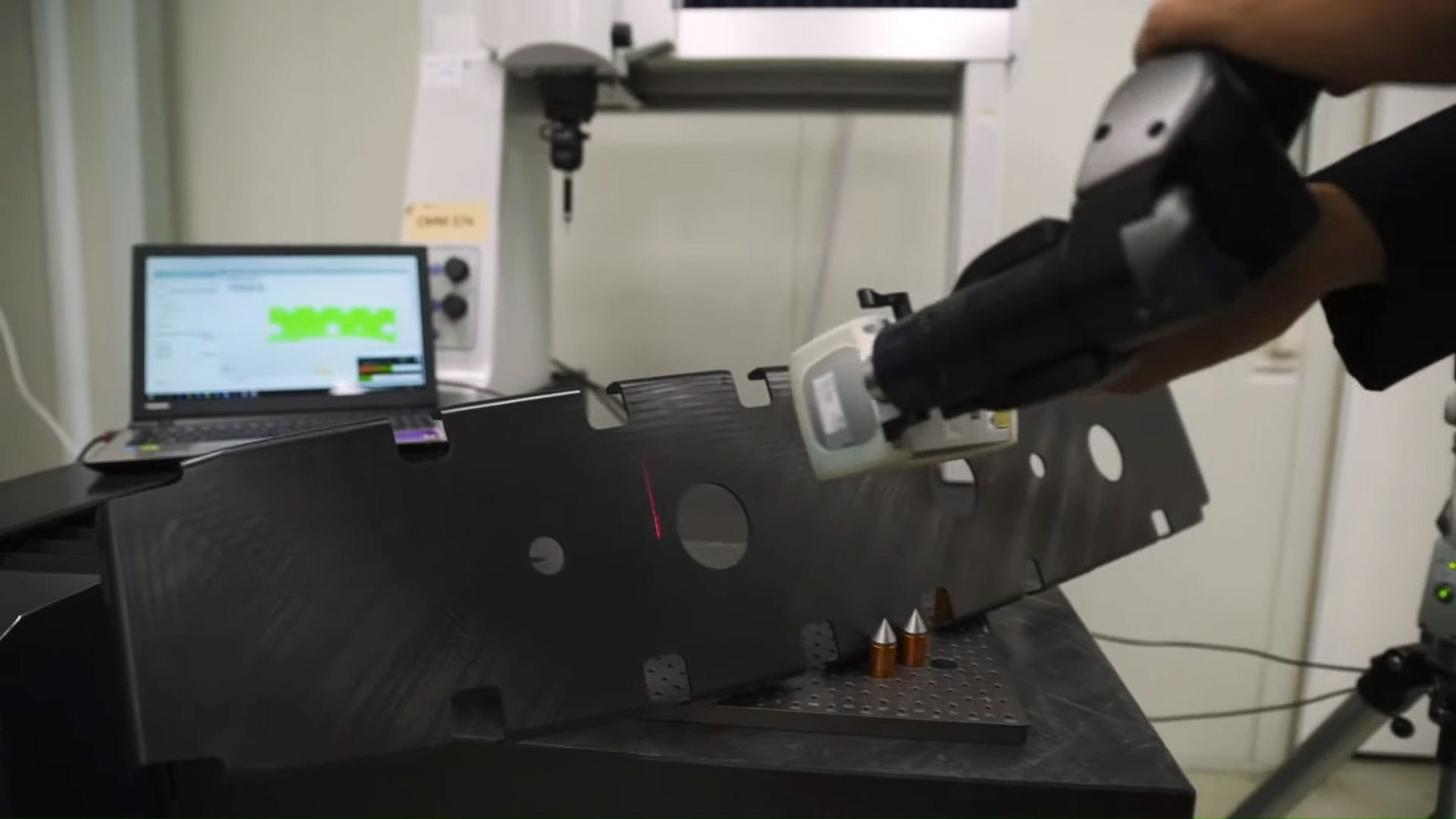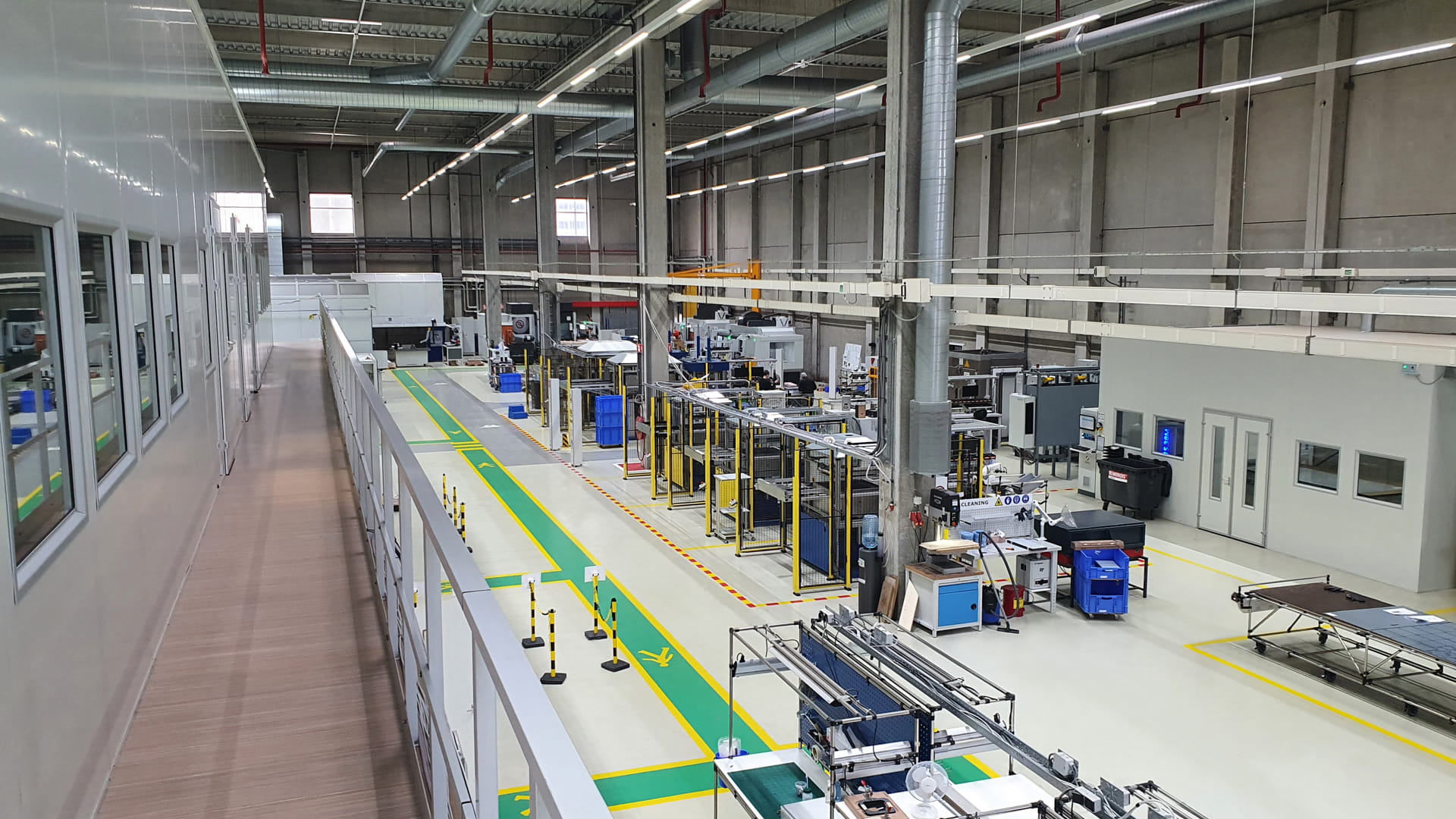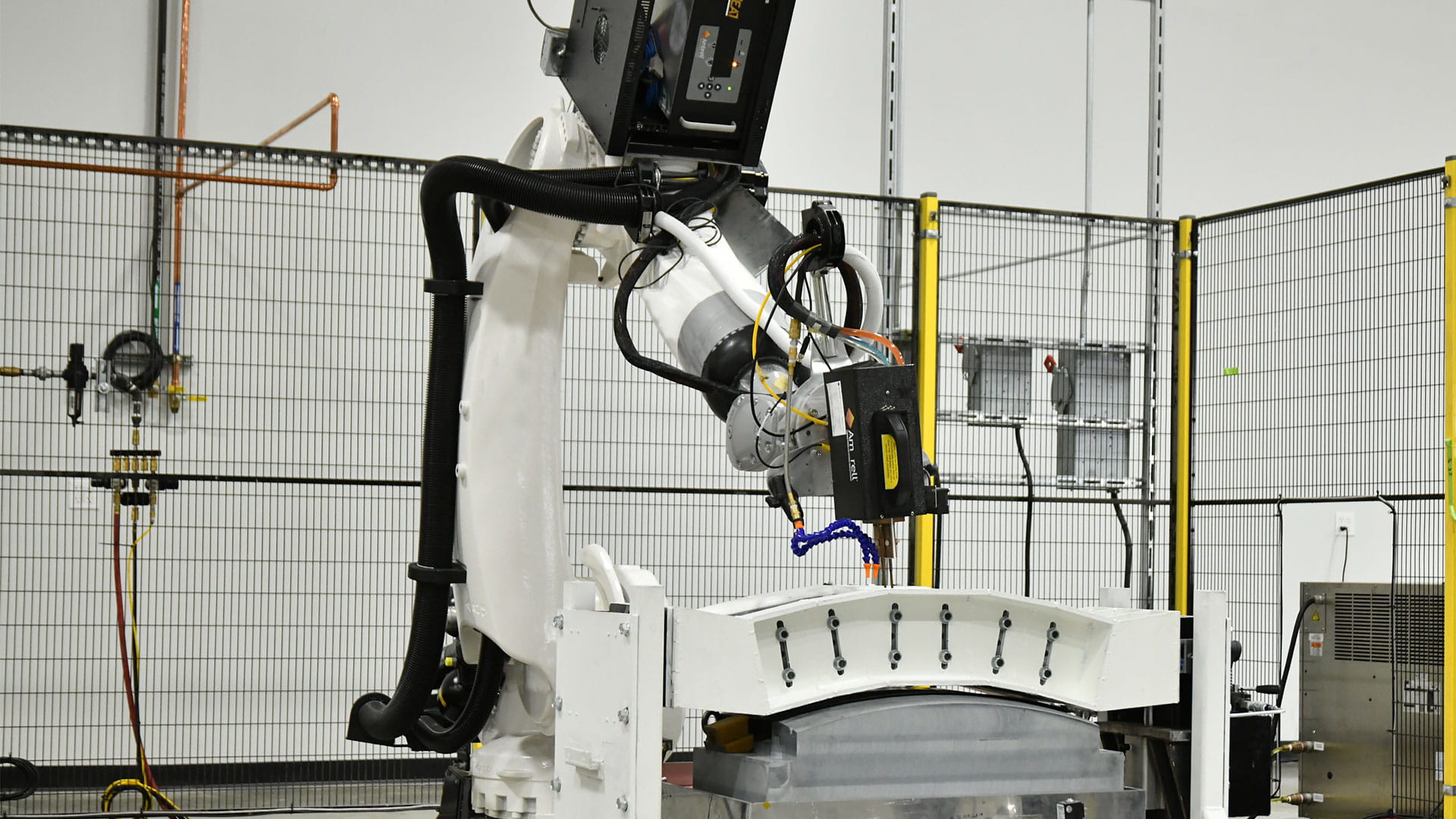Today's aviation industry faces two significant challenges - rising fuel costs and environmental sustainability. To overcome these challenges, Collins Aerospace is at the forefront, delivering advanced structural solutions to make aerospace products lighter, safer, stronger, more cost-efficient and sustainable. And just as we're committed to aerospace, we're identifying how thermoplastics can also improve products used in space exploration and defense applications.
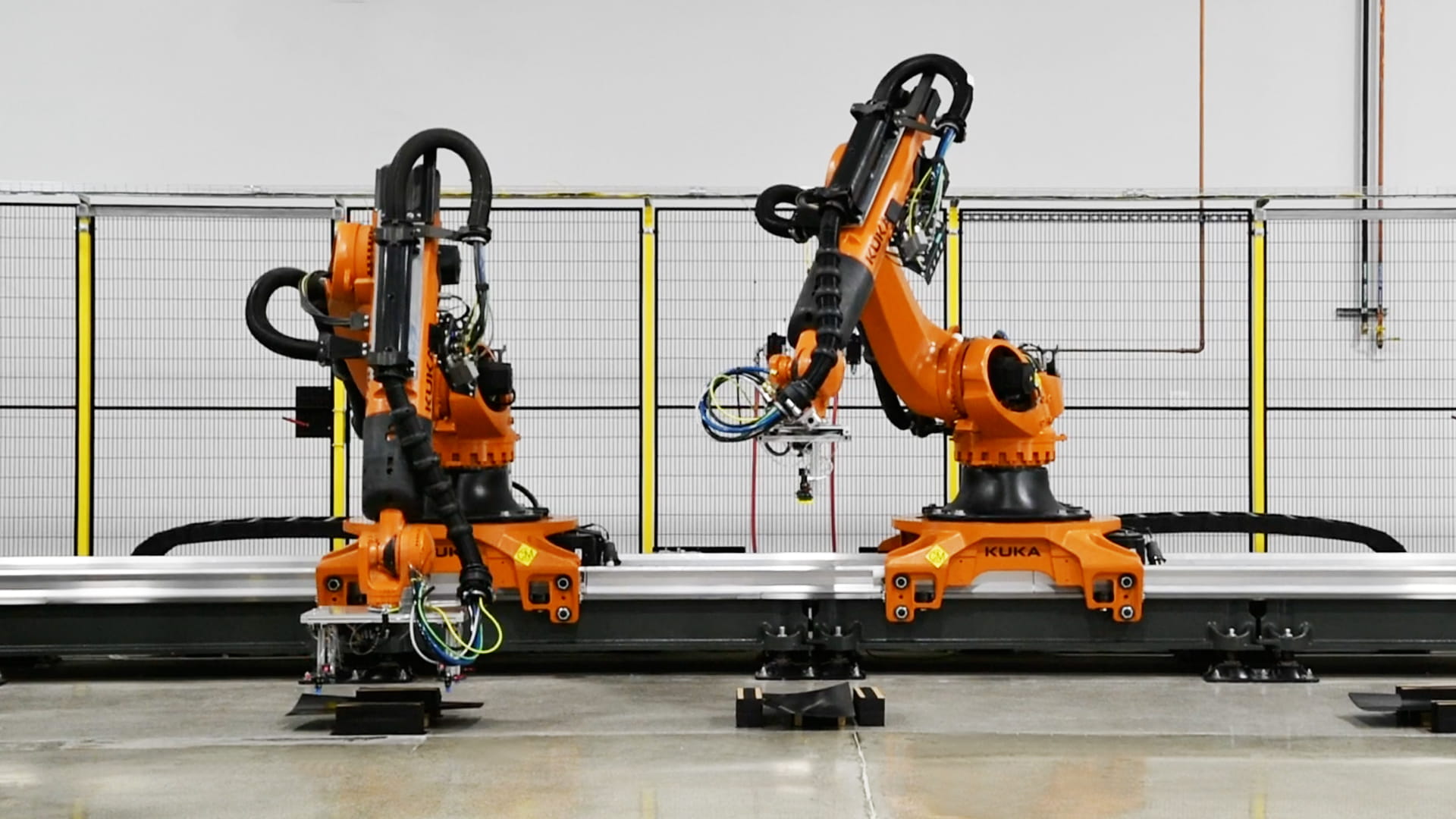
Introduction of thermoplastic composites technology
Known for its higher impact resistance, unique processing possibilities, lightweight properties, strength and environmental advantages, thermoplastic composites are increasingly being used in the aerospace industry to replace various metallic and thermoset composite parts. And as fuel efficiency is a key driver to reducing the operational cost of an aircraft, the aerospace industry is looking to manufacturers for lighter weight products. With thermoplastic composites, we can potentially reduce the weight of aircraft structures by 20 to 50% compared to thermoset solutions and metallic solutions respectively.
When it comes to manufacturing more complex parts, thermoplastics outshine the competition. Parts can be manufactured in minutes instead of hours, and in fact, customers can benefit by as much as an 80% reduction in manufacturing cycle time for the same part that’s even lighter.
Using a combination of materials, manufacturing processes and unmatched expertise, integrated thermoplastic composites—like access doors, engine nacelles, flight control surfaces and interiors—are lighter in weight and affordable due to their unique welding capabilities, which minimizes and even eliminates the need for fasteners. And, these aerospace composite structures can be manufactured and installed on aircraft where traditional thermosets cannot be present, due to the higher-temperature properties and durability that are characteristic of thermoplastics.
Benefits of thermoplastic composites
Parts manufactured in minutes instead of hours
80% reduction in manufacturing cycle time
Higher impact resistance compared to thermosets
Assembly by welding minimizes and can even eliminate the need for fasteners
Fully recyclable at the end of their lifecycle
Fly lighter, with less fuel
Aircraft structures made with thermoplastic composites can reduce operating costs and make flight more sustainable.

We’re advancing innovative materials and breakthrough technologies to create lighter weight, more sustainable components – from the smallest brackets to even larger, complex fan cowls – to reduce the overall weight of an aircraft. And lighter means more fuel-efficient. With automated manufacturing and integrated thermoplastic composite structures, we can help you fly lighter – and shape a more sustainable future along the way.
Acquisition of Dutch Thermoplastic Components
In November 2021, Collins Aerospace and Dutch Thermoplastic Components joined together to make flying better than ever before. As a result of this combination, we’re shaping the future in advanced thermoplastic composites. With the addition of Dutch Thermoplastic Components, Collins will accelerate the execution of its technology roadmap to drive the further expansion of advanced thermoplastic composites for complex aerostructures to make aircraft lighter, safer, stronger, more cost-effective and environmentally friendly. From commercial and military aircraft to urban air mobility and beyond.
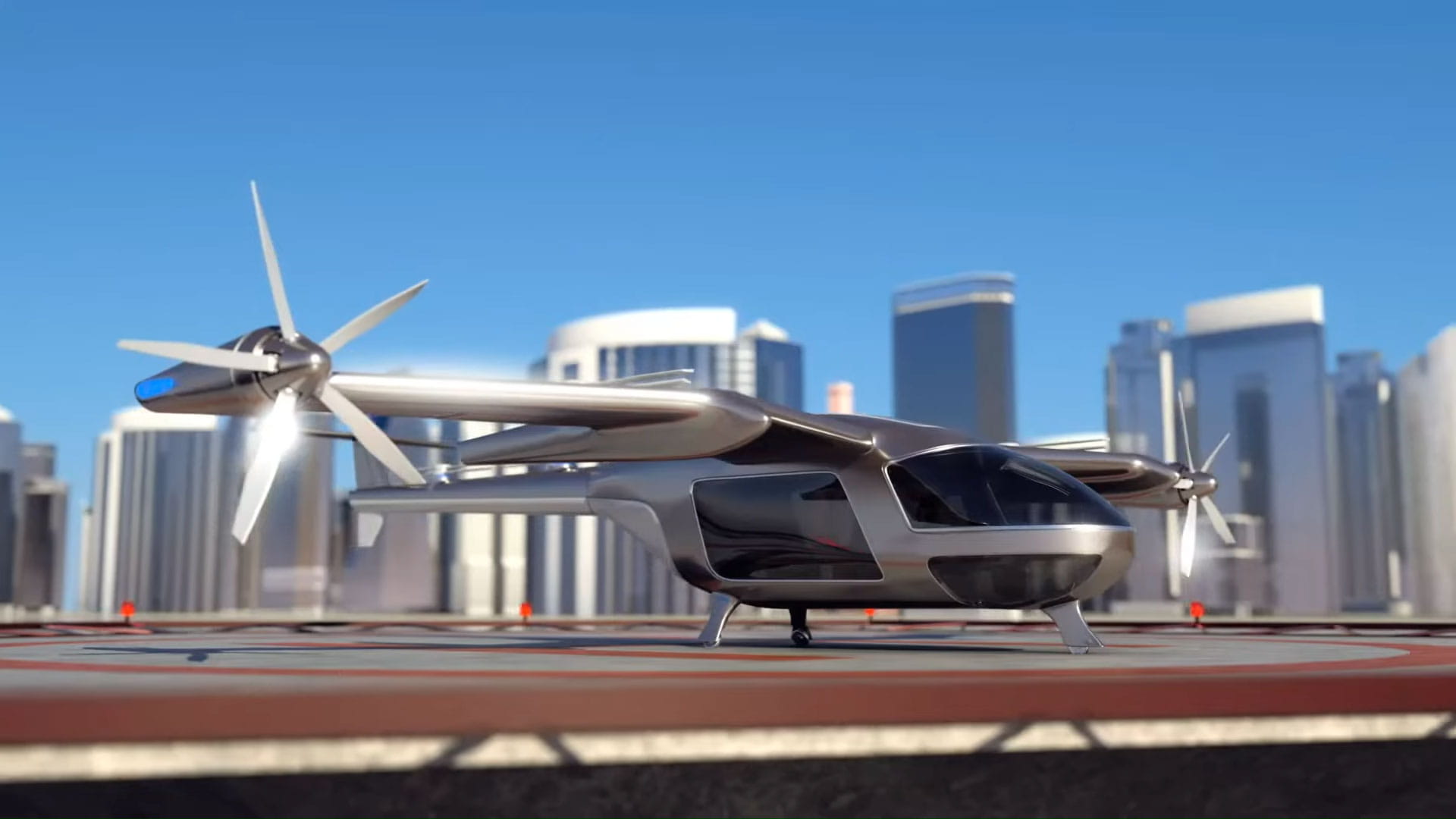
Manufacturing complex aerostructure components
Through its acquisition of Dutch Thermoplastic Components, Collins Aerospace has for more than 20 years, operated in the epicenter of thermoplastic composite technology. With a primary customer collaboration center in the Netherlands and a facility in the U.S., these two manufacturing locations bring lightweight, aerospace parts at competitive pricing and a more sustainable footprint to aerospace manufacturers worldwide.

Riverside, Calif. (AS9100)
- Automated Tape Lay-up (max 2,000x1,500mm layup area)
- Stamp forming press/thermoforming line (max tool size: 800mmx800mm)
- Multi-axis induction welding
- 8-tow Automated Fiber Placement (Q2 2022). Max. mold length 6m (static and rotation molds). Rotation horizontal molds max. weight 6t.
- Hi temperature furnace (max. dimensions 10’ x 10’ x 12’)
- Multi-axis NDI
Almere, Netherlands (AS9100 + NADCAP)
- Tape slitter
- 2D prepreg / tape cutter
- Automated Tape Lay-up max. 6,000 x 1,500 mm layup area
- Consolidation Press
- Continuous Compression Molding
- 2D machining center (consolidated panels)
- Stamp forming presses/thermoforming lines up to a length of 1.5 meter
- Automated deburring stations
- 3D machining center (consolidated parts)
- CMM stations
- Manual and automated NDI
- Edge seal
- Grit blast and paint
- Tooling design and fabrication center
All of our thermoplastic composite manufacturing is retained in-house, providing our customers with solutions that will meet shorter lead times, optimized weight and competitive pricing.
Our customer collaboration centers are equipped to support:
- Modeling for thermoforming
- Tape slitting
- Automated tape laying
- Consolidation by CCM and shuttle press
- Stamp forming
- Automated fiber placement
- Assembly by welding
- Continuous thermoforming
- High-temperature ovens
- Dimensional and NDI inspection
- Edge seal, primer, painting
- Test services
- Internally qualified processes and material systems
At Collins Aerospace, your structural components are built with the latest technologies and equipment. Each year, we invest millions of dollars to support aerospace composites and production automation. We also have extensive partnerships with well-known universities, associations and consortiums that specialize in thermoplastic composites, robotics and manufacturing.
Using state-of-the-art machinery, automation, and lean manufacturing principles, our production is suited for very small series of just a few straight forward parts, up to high-volume complex parts consisting of hundreds of parts per day.
We are highly experienced with the processing of all existing thermoplastic composites aerospace materials, and we are active in the development of new thermoplastic composites materials. We have the capacity to process both carbon and glass reinforced thermoplastic pre-peg systems (fabric and UD tape) using PPS, PEEK, PEI, PEKK and low melt PAEK resin. And all of our materials are qualified to:
- ABS5045
- ABS5083
- ABS5036
- ABS502
- BMS8-353
- BMS8-399
Certifications include:
- AS9100
- NADCAP for CMM and ultrasonic inspection
- AIPS 03-02-020 Manufacturing of monolithic parts with thermoplastic material
- AIPS 03-07-002 Machining of FRP components
- AITM 6-4005/4010 issue 10 Ultrasonic pulse-echo inspection of CFRP
- BAC5914 Collation
- BAC5023 Consolidation
- BAC5348 Processing of reinforced thermoplastic laminates
- BAC5691 Continuous Compression Moulding
- BAC5980 Non-destructive inspection of aviation composite parts and structures
Quality, availability and minimal stock levels are important drivers for our business and customers. We pride ourselves on Just-in-Time and Vendor Managed Inventory to ensure part availability when you need it most.
Shaping a better tomorrow
 Climate change is inevitable, so we’re doing our part to develop a more
sustainable path forward that will benefit our customers and our surrounding
communities. By adopting technologies like recyclable thermoplastic composites
in key aerostructures products, we’re doing our part to not only improve product
performance but also reduce environmental impact for the aerospace industry.
Climate change is inevitable, so we’re doing our part to develop a more
sustainable path forward that will benefit our customers and our surrounding
communities. By adopting technologies like recyclable thermoplastic composites
in key aerostructures products, we’re doing our part to not only improve product
performance but also reduce environmental impact for the aerospace industry.
Reduced aircraft fuel burn, production energy efficiency and waste elimination are three main areas thermoplastic composites contribute to sustainability. Specifically,
- The more weight we can take out of aircraft components, the lighter an aircraft—which in-turn leads to fuel savings. With our latest thermoplastic induction welding technologies, we’re developing integrated structures, eliminating the need for thousands of bolts, screws, nuts, and fasteners-all of which add weight to an aircraft.
- By using traditional materials like thermosets, aircraft parts are cured in large autoclave ovens which consume a massive amount of energy to manufacture the products. With thermoplastic composites, we are using more efficient out-of-autoclave processes that greatly reduce energy usage.
- Switching from thermosets to thermoplastic composites also adds to energy efficiency as cold storage of thermoset materials is eliminated.
- Thermoplastic composites have higher resistance to impact and fatigue compared to thermosets. This means that parts will last longer, a key to future circular economies.
Finally, thermoplastic composite products are fully recyclable at the end of their lifecycle, meaning that they can be melted, reshaped and reused.
Partnerships
TPRC consortium
ACMA (American Composite Manufacturing Association)
NASA ACC (Advanced Composite Consortium)
University Leadership Initiative
ARM (Advanced Robotics for Manufacturing)
CompoWorld
TAPAS
Thermoplastics news from around the web
- Welding is not bonding (CompositesWorld, Nov. 2023)
- The potential for thermoplastic composite nacelles (CompositesWorld, Nov. 2023)
- Collins Aerospace demonstrates new thermoplastic composites capabilities (CompositesWorld, Sept. 2022)
- Collins puts thermoplastics to good use (Nation Shield, April 2022)
- The future of aerospace is…plastics? (FlightGlobal, February 2022)
- Collins Unveils Advanced Structures, Including Dutch Thermoplastic Unit (Aviation Week, January 2022)
- Collins acquires Dutch Thermoplastic for undisclosed sum (FlightGlobal, November 2021)

